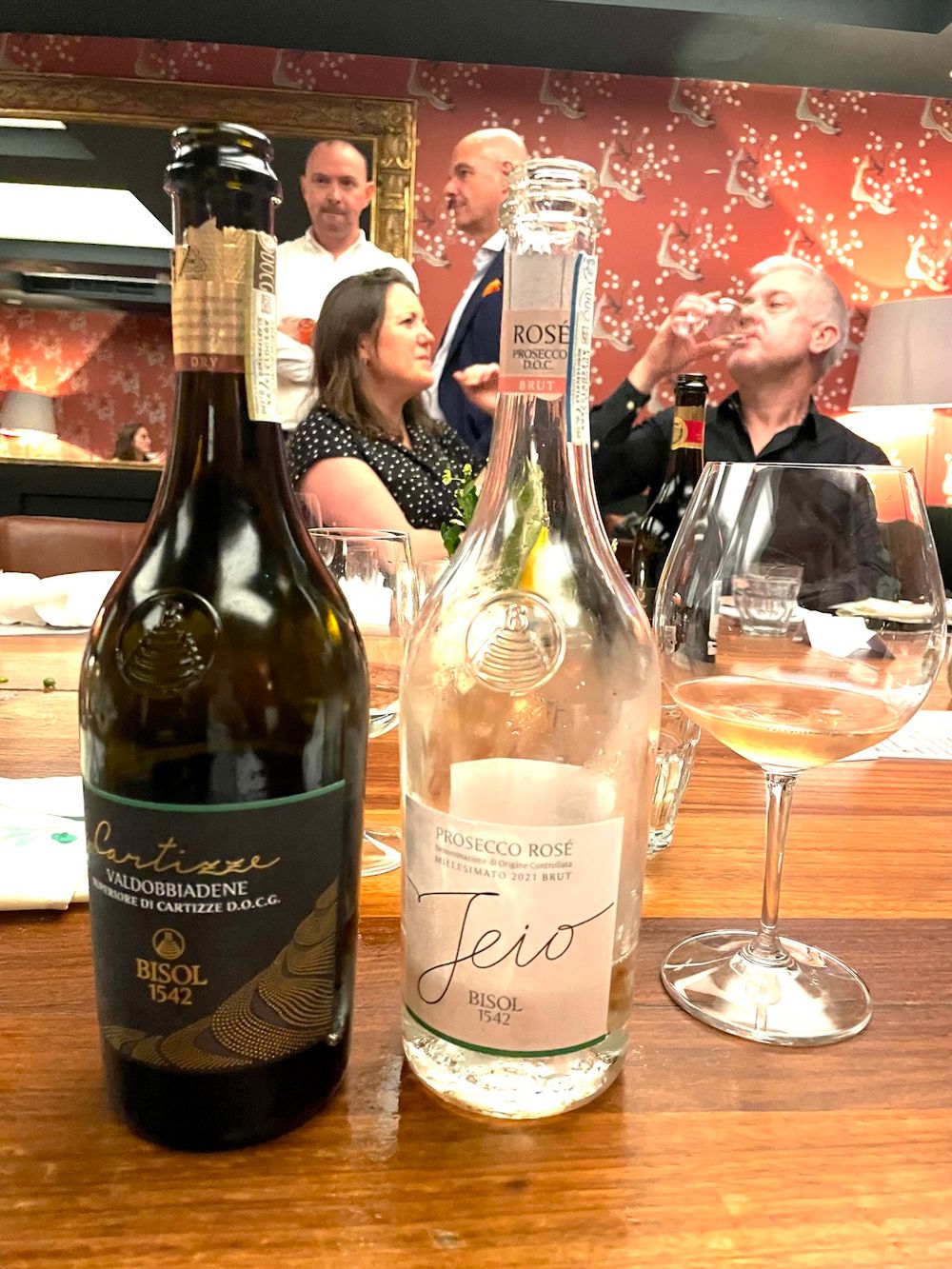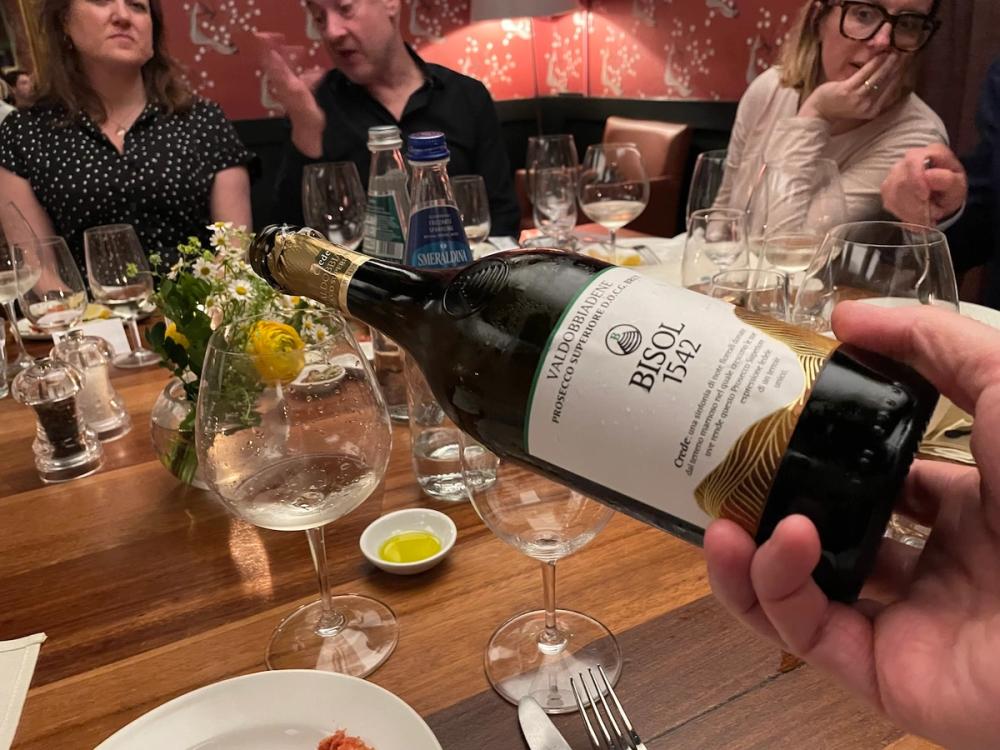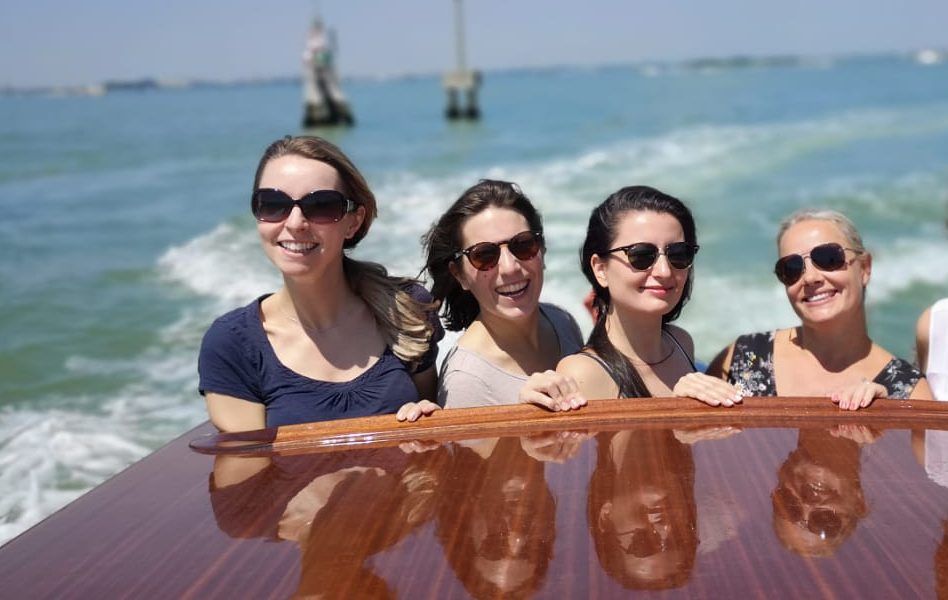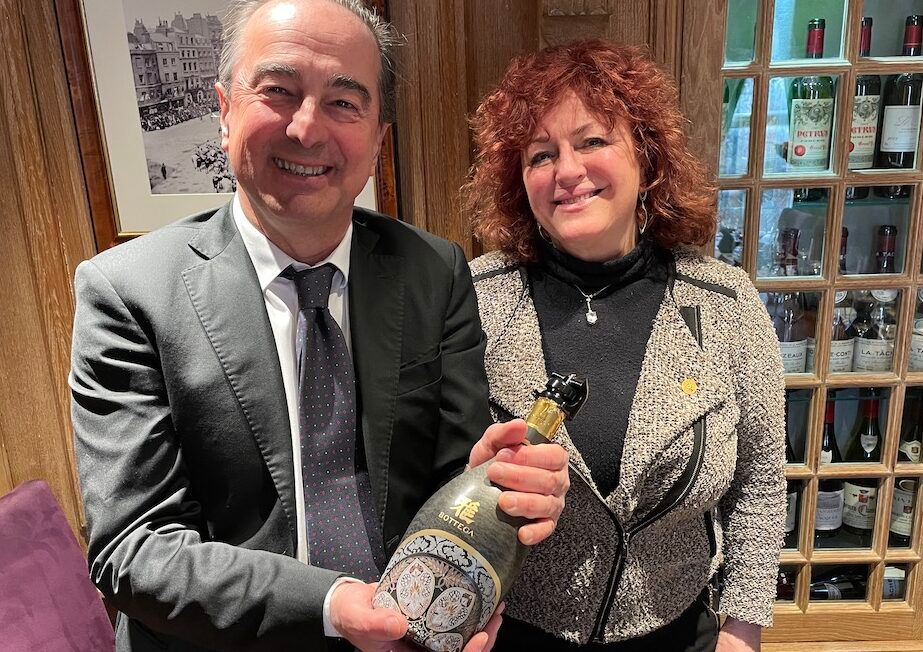In the Veneto region, Gianluca Bisol is wine aristocracy. President of Bisol 1542, he can trace his winemaking forebears back five centuries. And he is renowned as the saviour of winemaking in the Venetian Lagoon, reintroducing ancient vineyards which had been squeezed out, first by building of the historic palazzi and then, successive floods from the ‘Sixties onwards. The resulting Venissa Bianco is highly prized among deep-pocketed wine collectors with a taste for the rare.

But it is as a producer of a range of mid-priced Proseccos that Bisol is more widely known. Gianluca has invited us to Bocca di Lupo in London’s Soho to appraise five of the sparklers from the firm (now part of the Lunelli group alongside Ferrari wines), ranging in price from £15 to £35.
I start, with a marked lack of tact on my part, by pointing out to him that Prosecco is available incredibly cheaply in supermarkets in the UK. Doesn’t that drag down the image? Good-humouredly, Bisol bats this away. “Exactly the same is true of Bordeaux, although there the sky’s the limit for the top wines”, he exclaims.
Certainly, the wild popularity of Prosecco invites drinkers to become more discerning.The name of the game, of course, is to get them to differentiate between the various qualities.

Gianluca Bisol: wine aristocracy
As Bisol points out, his family was making wine a long time before the monk Dom Pierre Pérignon set to work on his bubbles in France. Whereas Champagne undergoes a second fermentation in the bottle, the Italian sparkler uses the Charmat method, with the secondary fermentation occurring in large tanks, most commonly today made of stainless steel.
The Prosecco DOC has been hugely increased in size, extending it to the plains towards the Adriatic coast in the east. But the posher wines, with select DOCG appellations, still come from the traditional area of hills to the west, nearer to Venice.
Above the basic Prosecco DOC are five ‘superiore’ categories. At the pinnacle is Superiore di Cartizze and just below sits Valdobbiadene Superiore di Conegliano .
So how were the wines tasting?

We start with two wines both retailing at around £15 a bottle – the Jeio Brut Prosecco Superiore DOCG (abv 11.5%) and the Jeio Rosé Brut Vintage 2022 DOC (abv 11%). Both are highly quaffable with the rosé boasting 15% Pinot Noir alongside the 85% Glera grapes that is the minimum required for all Proseccos. Cleverly paired with the rosé, is amberjack carpaccio, rosemary oil and blood orange.
The slightly pricier Crede Valdobbiadene Prosecco Superiore Brut (£18.50, abv 11.5%) has been produced with pure Glera since 2022. ‘Crede’ is the local name for clay which holds water, thus protecting vines from drought. This has aromas of pears on the nose and an appealing palate.
Moving further the scale, the “I Gondolieri” Crede Valdobbiadene Prosecco Superiore (£20) is a tribute to Venice and its gondoliers. It proudly bears the official insignia of the Gondoliers’ Association on the neck of the bottle. Bisol is launching it in the UK to mark the 35th anniversary of exporting to the country. With no added sugar, Gianluca explains that this has the lowest ABV of the range at just 10.5%, something that should appeal to young, contemporary drinkers determined to moderate their alcohol intake.
With notes of citrus fruits (allegedly reminiscent of the “sunny fruit of the Rialto Market”) on the palate, this is super-approachable and has a pleasingly dry finish.

It’s a big jump up to our final wine, the Bisol 1542 Superiore di Cartizze – Dry (£35, ABV 11.5%). Described as the Grand Cru of the region, the Cartizze hill is seen as producing the ultimate express of Prosecco. Rich with creamy freshness on the nose this has stone fruit and mineral notes, a fresh acidity and a decent length on the finish.
When, as a young man, Gianluca proposed selling Prosecco to the English he was told it was ‘a mission impossible’. The English loved Champagne, his father declared. Today, it does not even worry him that his wines need to come out from under Champagne’s shadow. Other sparklers may need to, but Prosecco’s tradition is older and its best wines are happy to compete, if needs be, with the French offering.







































